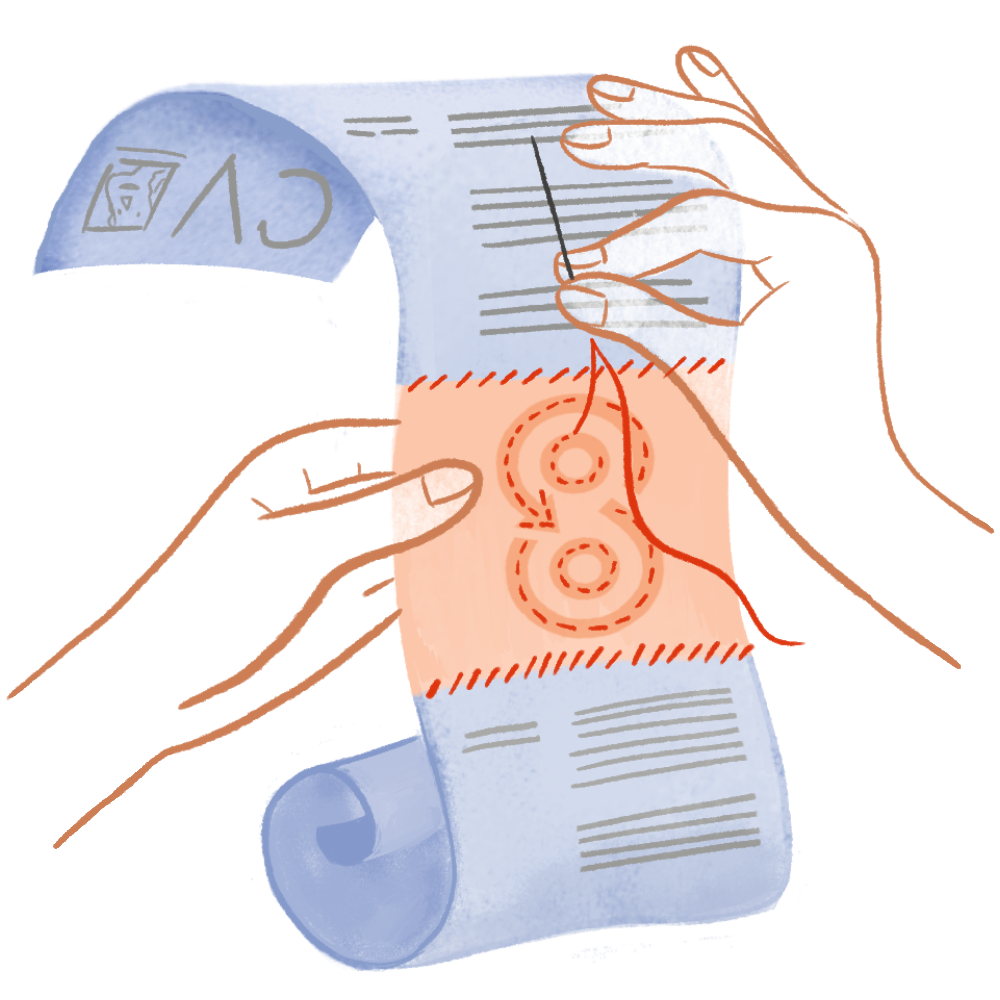How To Write & Refine The Perfect CV

Writing a CV can be both one of the most important and most frustrating parts of finding a new job.
It’s a skill all of its own and one that often has very little to do with the actual job you’re applying for. After all the years spent training to be a pilot, vet, or financial advisor, now you’ve got to put pen to paper and convince someone that you really are the perfect person for that role.
While some people are masters of CV writing, it’s not uncommon for a resume to need a little extra time and refinement. Fortunately, there’s a simple step by step process you can follow that will set you on the path to success and that’s what we’ll be sharing today.
Step 1: Formatting & Layout
While it might not seem as important as the content, bad formatting can often be disastrous, causing many employers to overlook your resume entirely.
On the face of it, you might just think this is about professionality. Although it’s certainly true that an unprofessional looking resume won’t get you very far, there’s actually an even bigger issue at play – one that many first time applicants don’t even know about.
When filtering through applications, many companies now use a system called ATS (Applicant Tracking System) to speed up the process and understanding a little about how ATS works is absolutely crucial to formatting your CV.
There’s a common misunderstanding about ATS that it makes the decisions for recruiters. This is not strictly true but what it is designed to do is reformat the information in a way that will be easier for recruiters to parse.
The way most ATS systems work involves scanning an image of the text from left to write. Some will then also convert it to a more convenient format for ease of reading.
Now let’s say you’ve put together a beautiful looking CV. At the top you’ve got a nice headshot. You’ve split your page into two columns with periodic subheadings denoting the various sections. From a graphic design perspective it’s very appealing. For anyone using an ATS system, it’s a bit of a nightmare.
Not only will the ATS jumble up your text by reading both columns as if they were one line, but that photo will then also play havoc. What the recruiter will see is a garbled mess.
Now, that’s not to say they don’t know why this happens and some dedicated recruiters may take the time to piece your CV together or go and find the original document, assuming they like what they see. That said, it’s not a good idea to expect this.
If you want to make life easier for your potential recruiter – and you really should – then here are some points to keep in mind:
- Don’t use columns or photos – they add nothing practical and they can cause problems
- Do use keywords when describing your skills – ATS systems rank resumes based on keyword searches so this is how you get yourself to the top of the pile
- Put your relevant skills first, closely followed by your work experience – this tells them why you’re right for the job before backing that point up with evidence
- Don’t write more than two pages – if you can’t fit it into your resume then it’s either too much information or material for your cover letter
- Remember to provide up to date contact details – when it comes to jobs, it never helps to play hard to get
Step 2: Content
Now that you’ve got some headings in place, it’s time to write the actual content. This is often the most daunting part because it requires you to talk about yourself in a way that is both professional and practical.
First things first, if you’re worried about someone judging your writing skills then, unless you’re advertising said skills on your CV, try to not sweat the small stuff. Yes your CV should have correct spelling and grammar but no it doesn’t have to read like it was written by Shakespeare or Tolstoy.
The real trick to writing good CV content is to always follow the three C’s:
- Clear – your writing should be easy to understand
- Concise – never use five words where one will do
- Confident – don’t hedge and don’t downplay yourself
At all costs you should resist the urge to be modest.
Lastly, don’t be afraid to get help. If you have friends or family who’ve been through this process before then ask them to review what you’ve written. If that’s not an option for you then AI is always an option so long as you use it responsibly.
Make sure to always read over what it writes and confirm that you’re happy with its choices. Remember, if an AI tool writes something that isn’t true, that could get you into trouble.
AI is generally at its best when it has material to work with so try telling it the things you’d like to say and check if you agree with the phrasing it comes to. You can always ask it to revise points you’d like to change. Alternatively, you could write a draft and then get it to proofread.
Also, keep in mind that American AI tools will generally default to US English unless told otherwise so if you’re from outside the US then make sure to clarify that point.
Step 3: Apply, Revise, Apply
At this point, if you’ve followed all the steps so far, you should have a pretty strong document in front of you. That said, don’t get too attached. Even if it looks perfect and feels perfect, the only way to know for sure is if it lands you an interview.
If you’re not getting many interviews, then that’s usually a sign that your resume isn’t tailored enough. Fortunately that’s a relatively easy problem to fix with some research and revision.
Most of the time, the problem is as simple as keyword optimization – making sure you’re using the exact terms recruiters are looking for. A little googling can go a long way in this area but, to an extent, it’s also just a matter of trial and error.
There are also lots of great online resources and places where you can have your CV workshopped and reviewed by professionals. That being said, always be extra careful who you take advice from – especially if they’re asking for money – as the online careers space is full of people looking to profit from giving bogus advice (not to mention outright scammers).
When all’s said and done, it may take some time but if you keep chiseling away, then before too long you’ll have a first rate resume.


